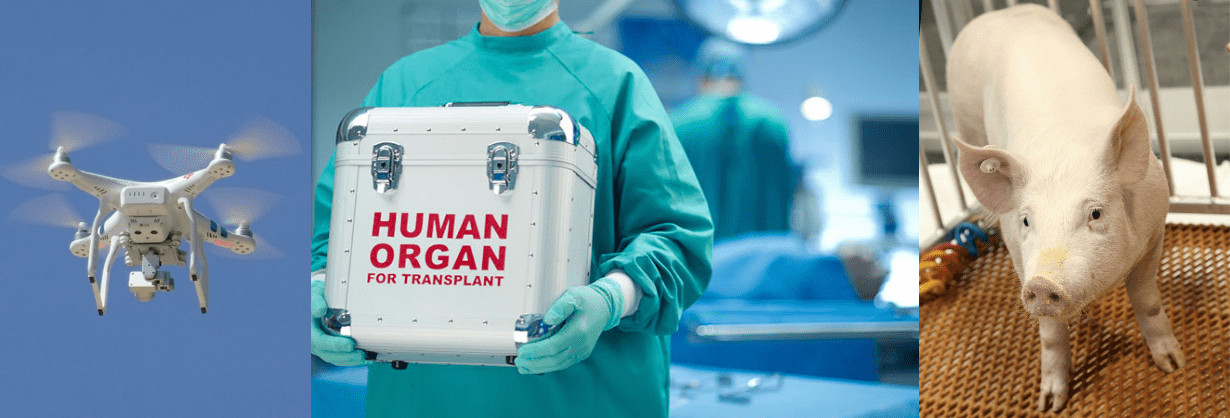How are organ procurement organizations (OPOs) fighting back against the overwhelming wait for a transplant that 100,000 patients in the U.S. are facing right now, not to mention the 12 people who will pass away while waiting every day?
As TechCrunch reports, OPOs are working to improve the efficiency and the dependability of the transplant process—let’s explore.

Unique Demands of Transplant Coordination
One factor that makes transplant logistics unique is the need to communicate and work together in real time, which often includes collaboration between strangers.
Organs become available suddenly, and when they do, OPOs have a narrow time window in which to provide a viable organ to a transplant hospital to save a recipient’s life—just 12 to 14 hours for kidneys, four to six hours for hearts and lungs, eight hours for pancreas and liver transplants. Multiple transplant centers may be awaiting the same type of organ at the same time.
As a UNOS strategist explained, once upon a time, transplant coordination was a “shockingly informal” collaborative process. Gift of Life Donor Program’s President and CEO Howard M. Nathan (who is also our 2021 Hope Awardee) explained that a single professional ran most of the transplant collaboration process in the 1980s. That OPO professional designed an organ urgency rating system for patients— patients would then listen to his voicemail recording to decide whether a particular donor could be a match for their needs.
Tracking Organs Like Amazon Packages
Today, UNOS supports a web-based application and a mobile app to assist with the matching process.
The chief clinical office at OPO LifeSource says that some OPOs operate with an organ tracking system similar to Amazon packages. Right now, it is difficult for OPOs to track precisely where an organ “package” is once it has left its origin point—but soon, organ tracking will include real-time location information.
At that stage, transplant surgeons will have a better understanding than ever of their timing to save a patient’s life. They can prep a patient early or later than expected to accommodate an early arrival by plane or a traffic jam.
Taking this prospect one step further, LifeSource says OPOs and transplant hospitals may soon have access to an organ travel app that will display travel times and options for transplant, including vehicle or plane travel.
Regional Waiting List Boundaries
Traditionally, OPOs prioritize giving available organs to recipients in the same state or UNOS region. However, patients have the opportunity to join the organ transplant waiting list in multiple states at once. Wealthy patients can potentially use their resources (such as a private jet) to travel quickly to any state with an available matching organ, cutting their wait time compared to patients who have lower financial capabilities or are confined to a particular state or region.
The current UNOS “algorithm” remains flawed—for instance, while OPOs in the Midwest may have access to organs that become available anywhere in the country, OPOs on the east or west coast typically have barely any pathways for accessing an available organ from the opposite coast.
The Future of Organ Procurement
OPOs are investigating the possibility of using predictive analytics to calculate the probability of survival for an organ recipient, including their odds of getting a similar or better-match organ in a reasonable timeframe.
One area of focus for OPOs is using drones to deliver organs, which is a hopeful area for exploration—but Howard Nathan points out that these experimental methods could also put those organs at risk.
Cryogenics and warm profusion may give OPOs more time to get organs to patients. Some of these systems are currently in FDA trial stages, meaning that patients likely won’t benefit from these technologies for years to come.
Two areas for immediate improvement are blood-type matching and age consideration. Better preservation technology could allow medical centers to keep organs viable for longer, until a patient comes along who is an ideal match for the organ. New technology could expand the donor pool for DCDs, or organ donations following circulatory death—by up to 30% for heart transplant candidates.
Xenotransplantation, or using animal organs for human use, has been under experimental testing for years, but researchers currently predict these options are still 10 to 15 years away for patients.
OPOs reiterate that ultimately, more people saying “yes” to being organ donors is the top source of hope for patients on the transplant waiting list. That hope involves reminding others of the power of the gift of life through transplantation—and their own ability to become a part of the solution.
Written by Emily Progin










